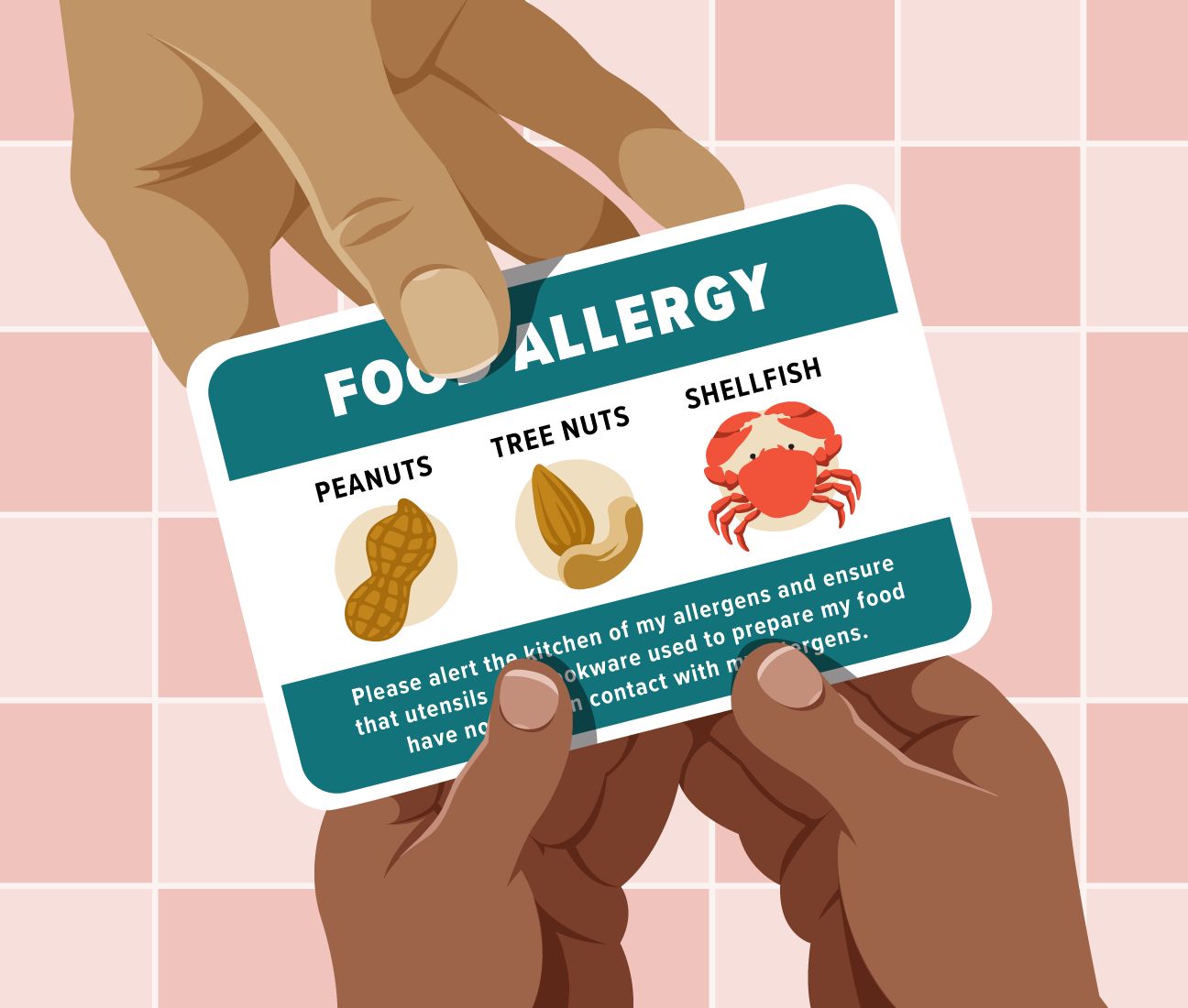Managing your child’s food allergies away from home can be challenging — especially when you’re not present to provide guidance. A written plan can be helpful for situations like school, camp, and spending time with friends.
Food allergies occur when your body mistakes a food or an ingredient as harmful and mounts an immune response against it. Hives, facial swelling, wheezing, and stomach upset are common symptoms of food allergies. For some people, food allergies can be serious and cause life threatening reactions.
As a parent of a child with a food allergy, you might feel nervous about putting your child in situations where you can’t supervise their meals and snacks. Even though many children take on active roles in managing and preventing allergen exposure, being able to check labels, ask important questions, and oversee activities can bring you peace of mind.
When you can’t be with your child, providing a written food allergy plan for other caregivers helps ensure your child’s safety. Consider these important details when developing your allergy plan.
Include basic information such as your child’s:
- name
- age
- weight
- height
- date of birth
This information can be important for verifying your child’s identity in group settings where supervising adults may not be familiar with each kid. For added clarity, consider attaching a photo of your child to the allergy plan.
Food allergens can appear in unexpected places. For example, if your child is allergic to peanuts, certain chips or crackers that are cooked in peanut oil or made with peanut-based seasonings could cause a reaction.
Your child’s food allergy plan should list any known allergens. For an added layer of precaution, you can list common snacks and meals that often contain these allergens.
Who to contact in a food allergy emergency is one of the most important pieces of information in a food allergy plan.
Include:
- your contact details
- secondary contact information
- local first responders such as 911
- the names and contact information of your child’s allergist and primary care doctor
If your child regularly takes medications or has emergency medications on hand, have those use instructions clearly written down. In addition to providing the name of the medication, you should include:
- the medication’s purpose
- your child’s prescribed dose
- side effects your child may experience
- how often/when the medication should be given
Not every adult is familiar with the mild symptoms of a food allergy, such as itchy skin, facial redness, and stomach upset. Make a list of symptoms so supervising adults will be better able to identify a food reaction and administer treatment accordingly.
Along with the list of symptoms, include the steps for treating a non-serious allergic reaction, such as administering an antihistamine.
Having a list of severe allergy symptoms can help a supervising adult more quickly recognize a food allergy event. They can then go through the steps you’ve outlined for handling a severe allergic reaction.
For some children, this may involve administering epinephrine and an inhaler. Write out the process step-by-step to limit uncertainty in an emergency situation.
Epinephrine is an emergency medication used for serious and potentially life threatening allergic reactions. Even if you have instructions elsewhere in your allergy plan about how to handle mild or severe symptoms, clearly indicating when to use epinephrine can remove the guesswork for other caregivers.
For example, a premade outline from Food Allergy Research and Education includes a section that states:
- “If checked, give epinephrine immediately if the allergen was LIKELY eaten, for ANY symptoms.”
- “If checked, give epinephrine immediately if the allergen was DEFINITELY eaten, even if no symptoms are apparent.”
The American Academy of Pediatrics emergency plan adds: “If in doubt, give epinephrine.”
Some conditions, such as asthma, can increase the chances of a severe reaction to a food allergen. By noting these conditions, you can help other caregivers understand the risks associated with your child’s food allergen exposure.
Some medications for food allergies, such as epinephrine, come with special use instructions or storage requirements. Be sure to include these in the written allergy plan so other caregivers will know how to administer rescue medications and how to store them to maintain their effectiveness.
A chef’s card is a concise breakdown of your child’s food allergens and cross-contamination precautions for cooking (such as using separate utensils or cooking surfaces) that can be given out in restaurants and other places where someone who doesn’t know your child is preparing their food.
Chef’s cards can include your child’s allergens, food items that may unexpectedly contain those allergens, and the best practices for preventing contamination in kitchens where allergens are used.
It can be nerve-racking to send your child to school, camp, or a friend’s house where you won’t be able to watch for potential food allergens.
Creating a written food allergy plan not only provides some peace of mind for you but can also be helpful for other caregivers who may be less familiar with what to do in a food allergy situation.





